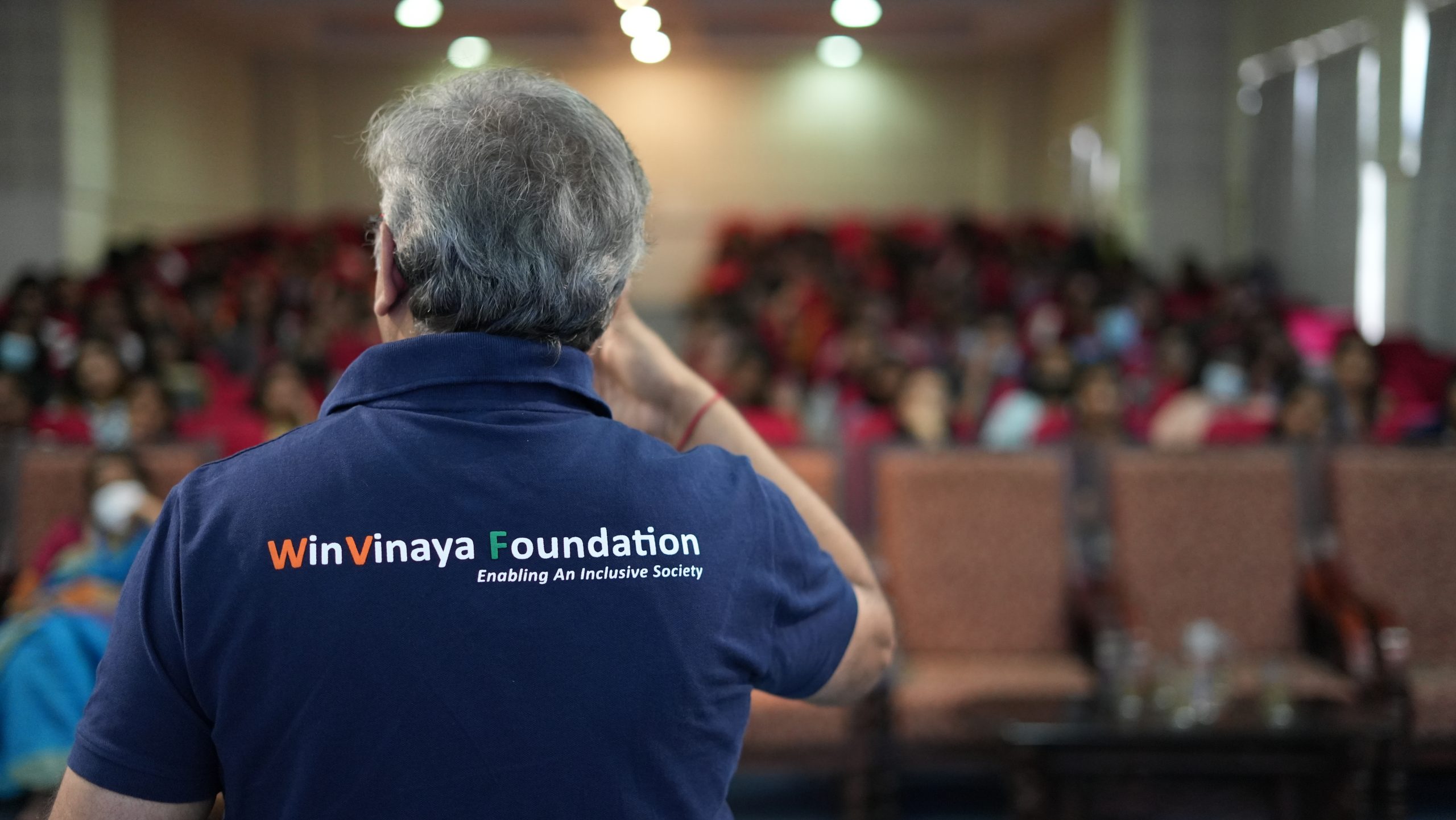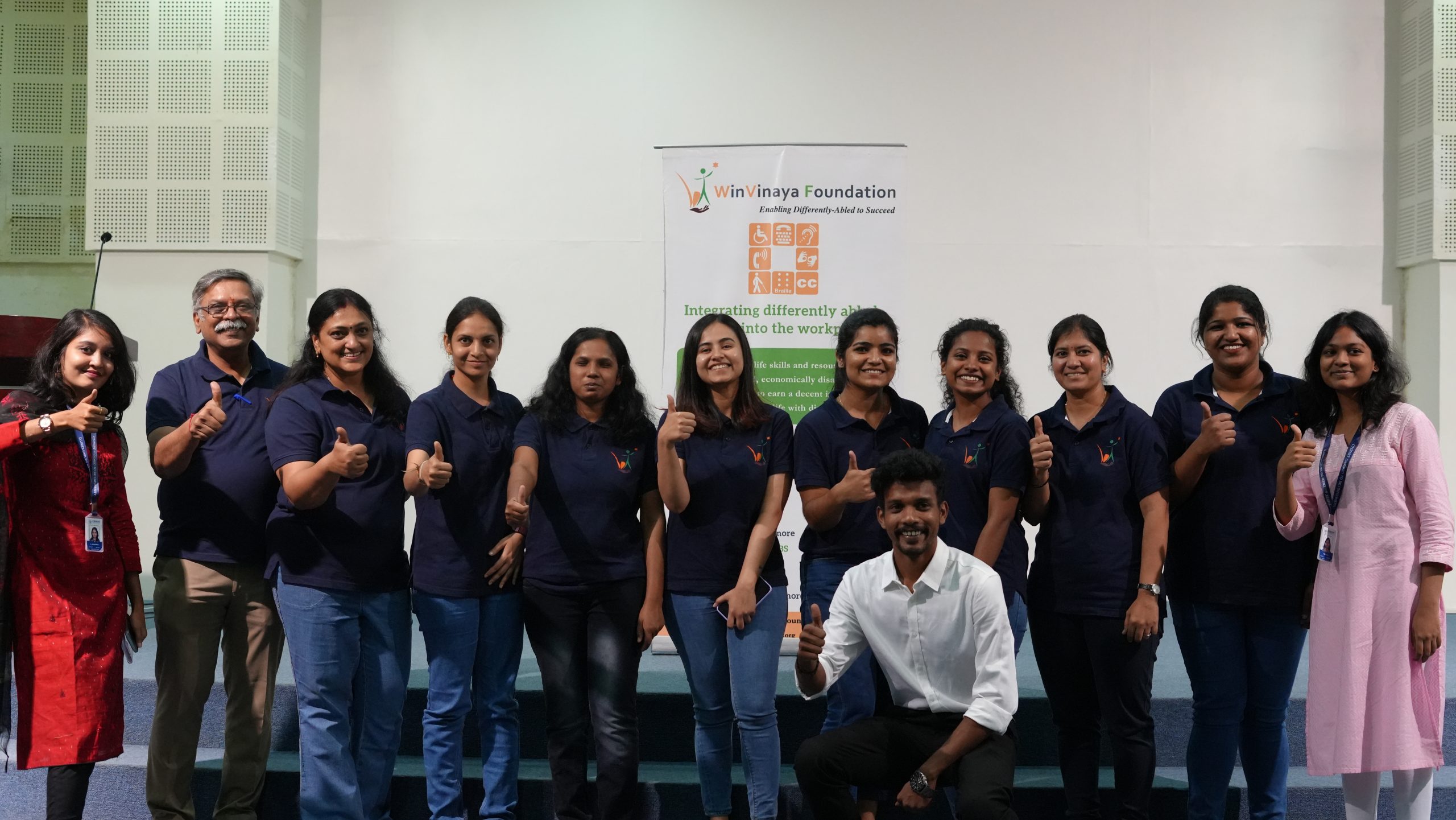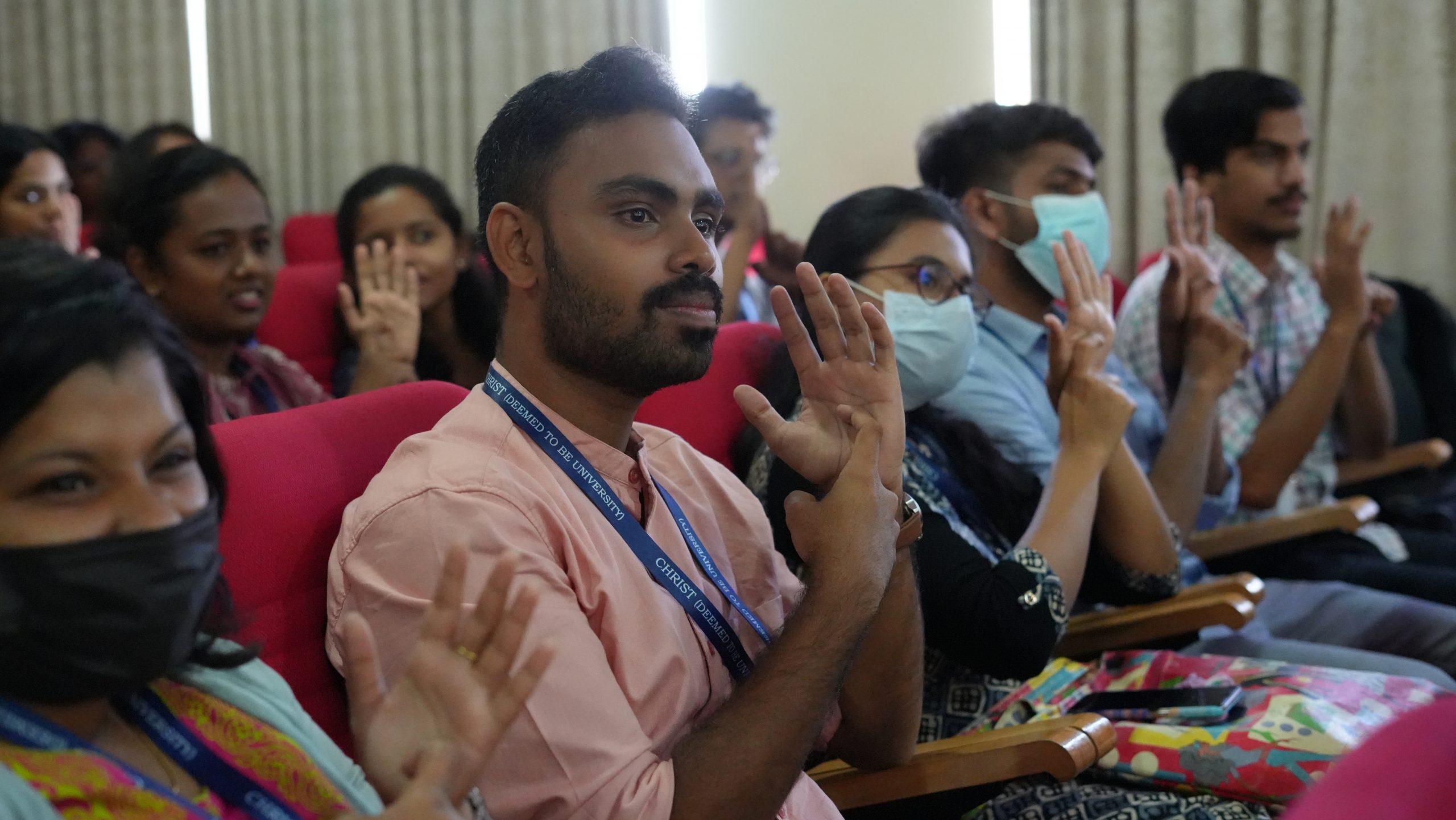Changing Mindsets
27 October 2022 | 5 min
Jayashree A

Disability sensitization program was conducted at Christ University, Bengaluru as part of the international week for the deaf and the International Day of Sign languages for 100+ students.
Quite a few students expected this to be a non-stop lecturing event about disability and inclusion. But it turned out to be an enjoyable, informative, and interactive event.
Ms. Akila, the co-founder of WinVinaya foundation, grabbed the attention of the audience by starting the session with interactive games in which even the last benchers participated eagerly.
Akila explained to us the Common Disability categories and also introduced us to the world of the two different disabilities- hearing and speech impairment and visual impairment.
To comprehend the world of the visually impaired individual better, Akila (the resource person) chose two student volunteers, blindfolded them and handed them a white cane, and instructed them to walk around the hall. Three more student volunteers were brought in as obstacles in the walking path. After facing initial difficulties, in understanding their surroundings, the volunteers started relying on their auditory and sensory perceptions which allowed them to navigate around the hall without much of difficulties. After seeing the volunteers try their hand at the activity, there was a demonstration by Yogitha who is a person with visual impairment and she walked around the same place where our volunteers were facing difficulties with such ease even though she was not using a cane and was new to that place and also she demonstrated how she uses the screen readers in her laptop and showed how she orders food and shops from the online shopping applications on her smartphone (using the talkback feature).
To understand the world of hearing and speech impaired individuals better, Ms. Gayathri who is a person with Hearing Impairment gave us insight into the Indian sign language and taught the students the sign language alphabets, and basic phrases like how are you? What is your name? etc.
Then, Akila (the resource person) picked a few volunteers, gave a sentence, and asked them to communicate through sign language to Gayatri. It was fun watching the volunteers trying to converse with Gayathri since they did not know much of the sign language and they had to rely on their expressions and generic signs. The message was pretty clear that to have effective communication you don’t need vocal language as a medium.
As Alexander Den Heijer rightly said, “when a flower doesn’t bloom, you fix the environment in which it grows, not the flower.” All of us learned a lot and I hope as social work students we organize many more such events in the future, to build awareness about disability to build an inclusive community for all.


